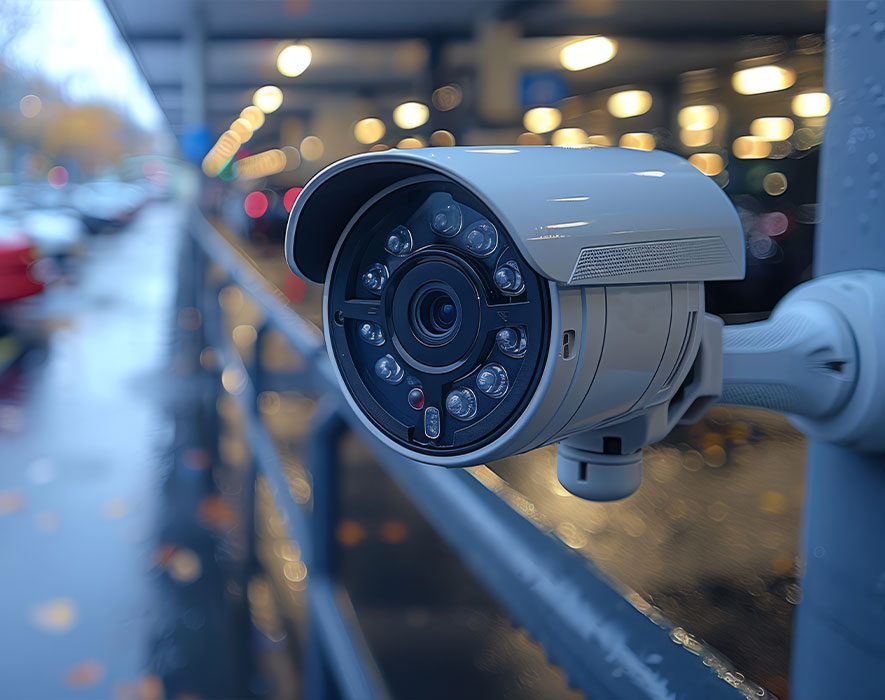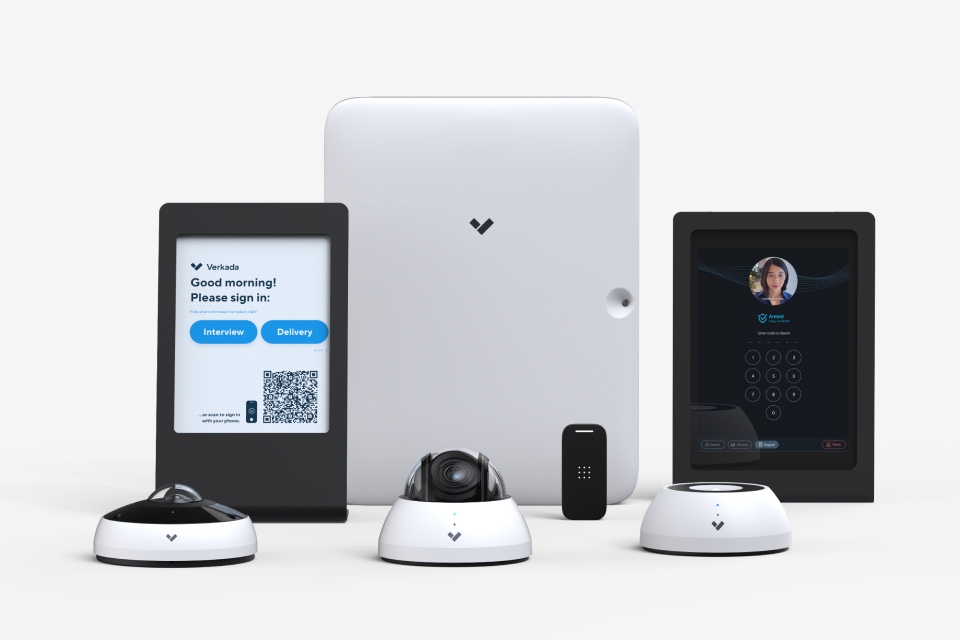
Capture high-definition video with Verkada’s range of indoor security cameras. Designed for clarity and reliability, these cameras feature motion detection, built-in analytics, and remote access to ensure the safety of your workspace, office, or retail location.


Keep your property secure around the clock with Verkada’s outdoor surveillance cameras. Engineered for all weather conditions, these cameras are perfect for entrances, parking lots, and large outdoor areas.
Add an extra layer of security to your front door with Verkada’s smart video doorbells. With two-way audio, motion detection, and HD video, you can monitor visitors, deliveries, and potential threats.


Description:
Keep your property secure around the clock with Verkada’s outdoor surveillance cameras. Engineered for all weather conditions, these cameras are perfect for entrances, parking lots, and large outdoor areas.
Verkada’s access control system leverages the power of the cloud, making it accessible from anywhere. No need for complicated on-site servers or software. Whether you're in the office, at home, or on the go, you can manage your building’s security with ease via a simple, user-friendly interface.
Whether you’re managing a small office or multiple locations, Verkada is designed to scale with your business. Add users, doors, and locations as your company grows — all without the need for complex installations or costly upgrades.
Track access to your building in real-time with automatic alerts and activity logs. With Verkada, you can see exactly who is entering and exiting, and get notified of any unauthorized attempts. Maintain full control of your building’s security without sacrificing convenience.
Verkada Access Control integrates seamlessly with Verkada’s line of security cameras, environmental sensors, and video surveillance systems. This unified approach ensures a cohesive security ecosystem, providing more visibility and control over your entire security infrastructure.
No more expensive server maintenance or downtime. Verkada’s cloud-based platform gives you real-time access and control of your building’s security, no matter where you are.
Control access using your smartphone or tablet. The Verkada app allows you to remotely unlock doors, manage users, and receive instant alerts on your mobile device.
Set up automatic access schedules, permissions, and restrictions based on time, user roles, and even visitor management. From employees to contractors, you can create customized access rules for everyone.
Streamline guest access with an intuitive visitor management feature. Visitors can pre-register and receive temporary access, with their activity logged for security purposes.
Gain deeper insights into your access data with advanced reporting and analytics. Identify trends, track entry patterns, and quickly detect any anomalies or security risks.
Verkada’s access control hardware is built to last, with tamper-resistant designs, weatherproof enclosures, and battery backups for uninterrupted service.



Our sensors provide real-time data on temperature, humidity, air quality (including CO2 levels), and other environmental factors. Monitor your space 24/7 with updates you can rely on.
Access your environmental data securely via the Verkada cloud platform. Stay connected to your environment from anywhere, at any time, on any device.
Installation is quick and hassle-free. No complex wiring or professional setup needed. With automatic updates and remote diagnostics, your system stays up to date with minimal effort.
Get instant alerts if thresholds are breached. Whether it’s high humidity, poor air quality, or a drastic temperature change, Verkada sensors notify you immediately so you can take action.
Verkada Environmental Sensors seamlessly integrate with other Verkada products, like cameras and access control systems, providing a comprehensive solution for building management and security.
Reduce the risk of harmful environmental conditions that can affect employee well-being, productivity, and overall health. Ensuring a healthy environment is more important than ever for the comfort of your people and the longevity of your equipment.
Optimize energy usage by managing HVAC systems based on real-time environmental data. By monitoring temperature and humidity levels accurately, you can reduce energy consumption and lower operational costs.
Prevent costly damage to your property with early detection of issues such as water leaks, sudden temperature shifts, or poor air quality. This proactive approach helps mitigate risks before they escalate.
Ensure that your facility is compliant with health and safety regulations, including air quality standards, temperature control in server rooms, and humidity levels in sensitive environments like laboratories.

Maintain precise climate conditions in sensitive areas like laboratories, patient rooms, and operating theaters to ensure safety, comfort, and regulatory compliance.
Get hands-on experience with Verkada. Our team will walk you through a personalized demo to showcase how our solution can meet the unique security needs of your business.
Have questions or need a custom solution? Contact one of our security specialists today for personalized advice and a tailored solution.
Ready to enhance your security? Sign up today, and start managing access to your business with Verkada’s cutting-edge cloud-based system.
Sign up for our emails and get not-so-boring updates and expert advice on
everything you never knew you wanted to know about IT and office solutions. Say goodbye to boring and hello to brilliance with Boring Business Systems!
© Copyright 2025 – Boring Business Systems. All Rights Reserved.